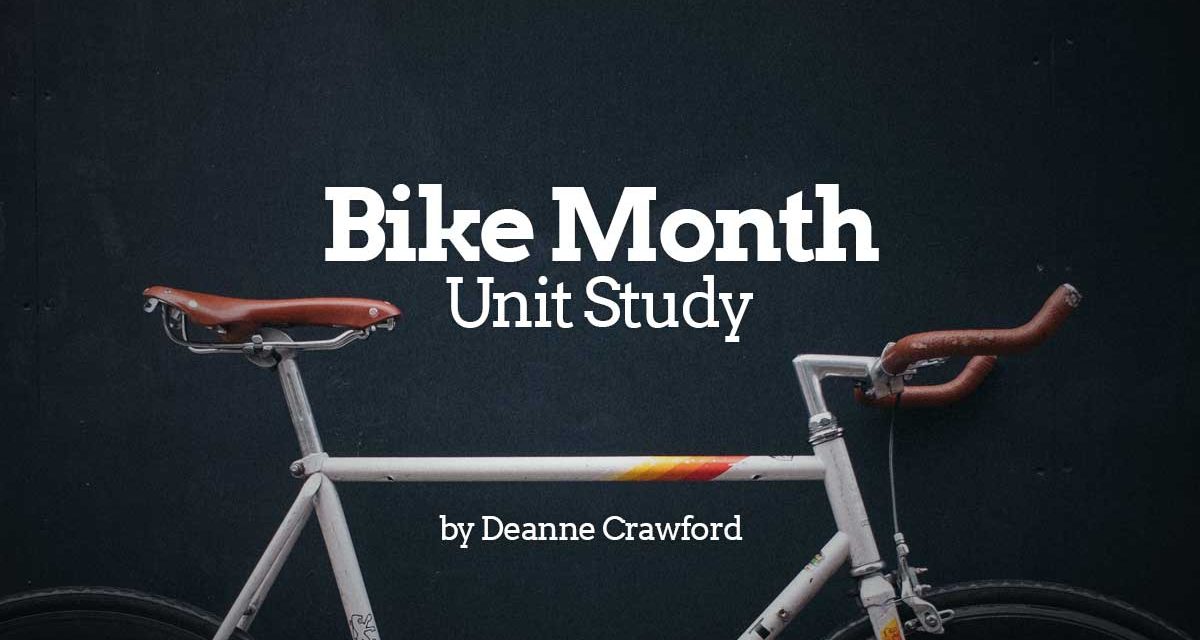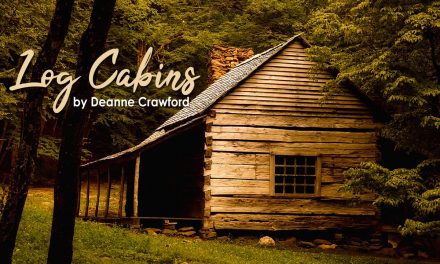Daisy, Daisy… give me your answer do.
I’m half crazy all for the love of you.
It won’t be a stylish marriage;
I can’t afford a carriage.
But you’ll look sweet upon the seat,
Of a bicycle built for two.
Originally written in 1892, Harry Dacre’s inspiration for Daisy Bell (or Bicycle Built for Two) began with an off-hand comment from his friend. The story goes that Mr. Dacre came to the U.S. from England, bringing along his bicycle. At customs, he was charged duty tax on his bicycle. In response, his friend remarked it was a good thing he did not bring along a bicycle built for two.
Welcome to our May Unit Study in celebration of Bike Month. I invite you to join me in making the most of your children’s natural curiosity while also reinforcing bike safety.
Bike Safety
Safety is imperative, whether you’re a beginning or experienced cyclist. Would you be surprised to learn that bike accidents land more children in emergency rooms than any other sport? One of the first considerations for all ages is selecting a bike helmet that fits. Safe bike riding begins with a properly fitted helmet. Learn more here. You may also want to spend some time with your children reviewing basic bicycle safety. An effective acronym to remember safety rules is: BIKE.
B-Be Seen: Wear bright or reflective clothing and consider a bike light if riding at night.
I-Identify: Know your surroundings and identify potential road hazards (traffic, potholes, dogs, etc) including weather conditions.
K-Know your bike: Safe handling is vital; also, routinely check your tire inflation and brakes.
E-Educate yourself: Become acquainted with general safety rules for bicyclists. Bike Safe, Bike Smart and check out the AAA, “Be a Roll Model”. Families may also want to learn bike laws in their state.
Bike History
Originally created for adults, children’s bicycles were not built until 1920, a direct response to plummeting sales caused by the newly invented automobile. Today, our lives are filled with tricycles, unicycles, training wheels, bikes for climbing mountains, extra gears for faster riding and even motorized bicycles. Introduce children to the journey from invention to today through this pictorial history.
Just for fun: Take your children outside. Ask them to straddle their bicycle and move forward without using the pedals. If you reside on a quiet street, ask them to propel their bike down the road a short distance. Did it become easier or more difficult as they travelled further? Have them describe their experience. Encourage older children to journal–younger children may need to narrate to you. Transcribe their experience in a journal or notebook. Narration is valuable for copy work or dictation exercises. If you are unfamiliar with this wonderful Charlotte Mason Language Arts exercise, Simply Charlotte Mason has an excellent introduction for getting started for elementary ages and Kimberly Garcia offers insights for elementary and upper level writing.
Bicycle Science
Bicycles are often considered one of the mysteries of science. Two wheels, steel or fiberglass frame, and a 60 plus pound human body: yet, perfectly balanced, moving forward at average speeds of 5-10 mph, without tipping over. Spend time learning about the not so mysterious powers behind the bicycle: Minute Physics and The Science of Bicycles are a great starting point. Just for fun, watch this short clip describing how the Wright Brothers took their knowledge of bicycles and applied it to the airplane.
Opportunities abound for bicycle-themed science activities. Younger children may enjoy pedaling through an obstacle course, easily created with orange safety cones or tin cans. Ask them to explain the differences in their pedaling speed on a straight path versus circling around obstacles in their path. Also ask them if they noticed a shift in their body posture and weight to counterbalance the bike position. Take this activity to the next level with your older children with this Science of Cycling: Turning Point Activity. Additional science focused activities include: Bicycle Water Bombs and Choosing Gear Ratios.
After all this outdoor fun, it’s time to come inside, cool-off and process the experience. For my family, this was our time to drink a tall glass of lemonade and share our activities. After discussing together, I would encourage them to journal, with freedom of choice. If they wanted to write about what they tried and how it worked or didn’t work, I was happy with their scientific adventure documentation. If they would rather sketch or write a poem about the experience, I encouraged their creativity! Joy in learning is the goal.
Writing about Bikes
During journaling, encourage them to add quotations. This is an excellent springboard into language arts. Let me explain. Ask them to copy the following, translated from a letter Albert Einstein wrote to his son, Eduard: “Life is like riding a bicycle. To keep your balance you must keep moving.” (For the curious, learn more about the translation here. ) Ask what this quotation means to them. Explain this quotation is considered a simile. Define simile. Just for fun–create your own similes. Relate them to your bike study for added challenge.
Finishing up
Our study would not be complete without a mention of the world’s longest bike race. Spanning 2,200 miles and 23 days, the prestigious Tour de France showcases the speed and endurance of the world’s greatest bicyclists. Introduce your children to the Tour de France in Animation, and the 23 Fun Facts about the Tour de France. Whether you child is a budding endurance rider or arm chair cyclist, encourage them to imagine what it would be like to be a team competitor.
As we come to the end of our study, I think John F. Kennedy summed it up best when he said, “Nothing compares to the simple pleasure of a bike ride.” As a family, take a long bike ride…maybe even pack a lunch and enjoy time together and the beauty of God’s creation.





